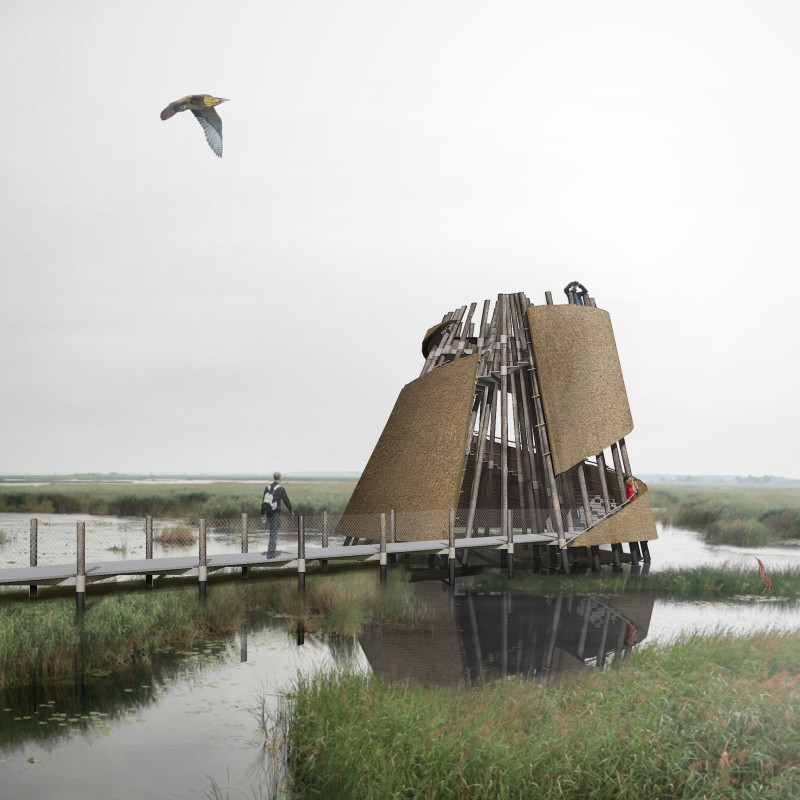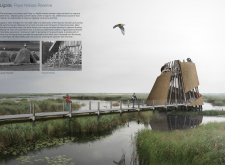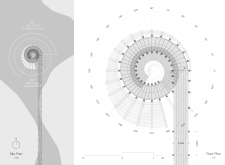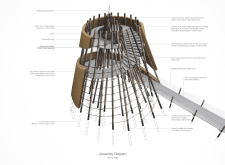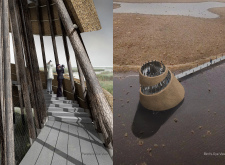5 key facts about this project
**Project Overview**
Located within the Pape Nature Reserve in Latvia, Ligzda exemplifies a design that integrates ecological awareness with cultural heritage. The structure serves as an observation point for local wildlife and emphasizes the significance of the area’s natural and cultural narratives. Drawing on the local vernacular, the design adopts elements from traditional hayricks, combining contemporary and traditional architectural principles to create a meaningful connection between inhabitants and their environment.
**Spatial Dynamics**
Ligzda’s spiraling form rises from the landscape, allowing visitors to ascend gradually and engage closely with the surrounding wetlands and avian habitats. An observation deck at a height of 7.35 meters offers panoramic views, enhancing the birdwatching experience while maintaining a sensitive relationship with the ecosystem. The wooden support poles reflect local construction methods and underscore the importance of harmony with the natural surroundings.
**Material Choices**
The project prioritizes the use of locally sourced materials, emphasizing sustainability. Natural solid wood poles provide structural integrity, while thatch roofing made from local reeds establishes visual continuity with the landscape. Galvanized steel elements, including the spiral staircase and decking, add durability, further enhanced by the use of perforated sheet steel for rainwater drainage. Each material choice is deliberate, reinforcing the project's ecological and cultural commitments while ensuring resilience against environmental elements.


